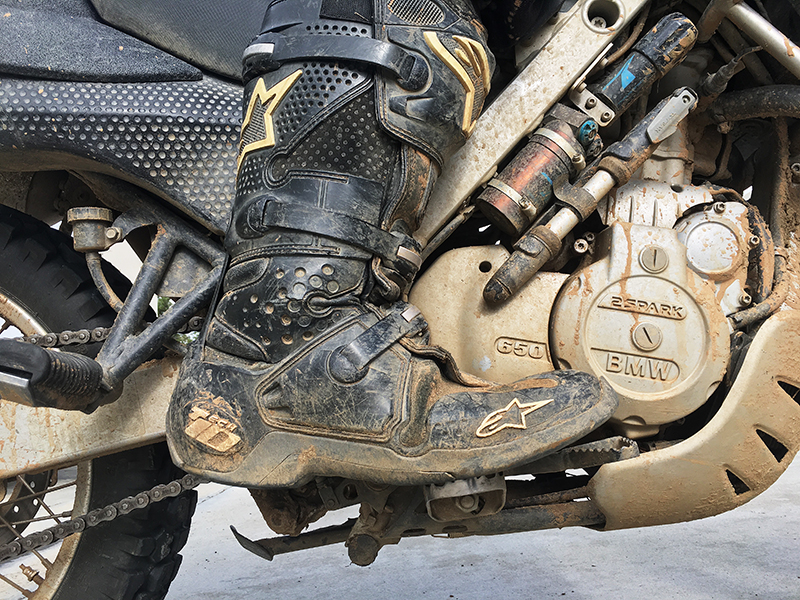
Editor’s Note: The EarthRider blog series focuses on adventure/off-road riding skills. If you haven’t read it already, check out our previous installment, EarthRider03: Control Lever Setup for Adventure Riding.
My previous EarthRider column provided tips for control lever setup for adventure riding. This installment covers a grab bag of other setup issues.
Free Play
Some suggest that a certain amount of free play in brake/clutch lever and throttle movement is a good thing because it allows the motorcycle to bounce around a bit without you unintentionally actuating the controls. Take the following as food for thought rather than gospel: I suggest adjusting your controls to allow minimal free play. There is always a bigger bump coming, so at some point you will have to rely on your own ability to let the bike move relative to your body without moving the control levers or throttle. If you minimize play in the controls, you force yourself to become more sensitive to the bike’s movements. That sensitivity will lead to an earlier awareness of what the bike is doing. Having more time to react to what that big bike is doing can help you keep the metal bits off the ground.
Read EarthRider01: Meet Laine MacTague
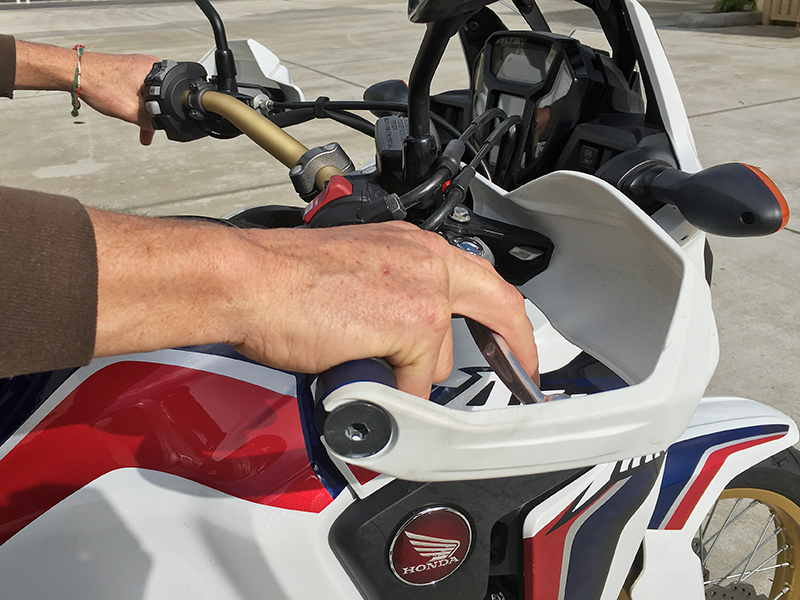
Another potential benefit arises when circumstances force your body into an odd position relative to the bike. Having a lot of practice at moving around on the bike without accidentally moving the controls will help you maintain control when that happens. Lastly, sometimes staying in an unusual position can help you balance the bike while you maneuver it. Minimal control play requires less hand/foot movement to take out the slack and make subtle control changes—a bit of brake here, some clutch feathering there—as the situation dictates. This comes into play when needing to make precise movements at slow speeds, such as when navigating sharp, loose, rocky and/or steep fire road curves, riding over and around obstacles on narrow trails, etc.
Footpegs
Some aftermarket footpegs are wider (front to back) and/or longer (they extend farther out from the bike) than stock pegs, providing a larger surface area for bulky off-road boots and making stand-up riding more comfortable. Aftermarket pegs designed for off-road riding often have more aggressive teeth for better grip, especially in wet or muddy conditions. Although wider footpegs are more stable and comfortable, they can create problems as well. They can hamper your ability to shift your body forward or backward when standing (we’ll get to why that is crucial in a future column). And they can make shifting or braking more challenging by shortening the distance between the front edge of the peg and the lever you are trying to get your toe under or press down on.
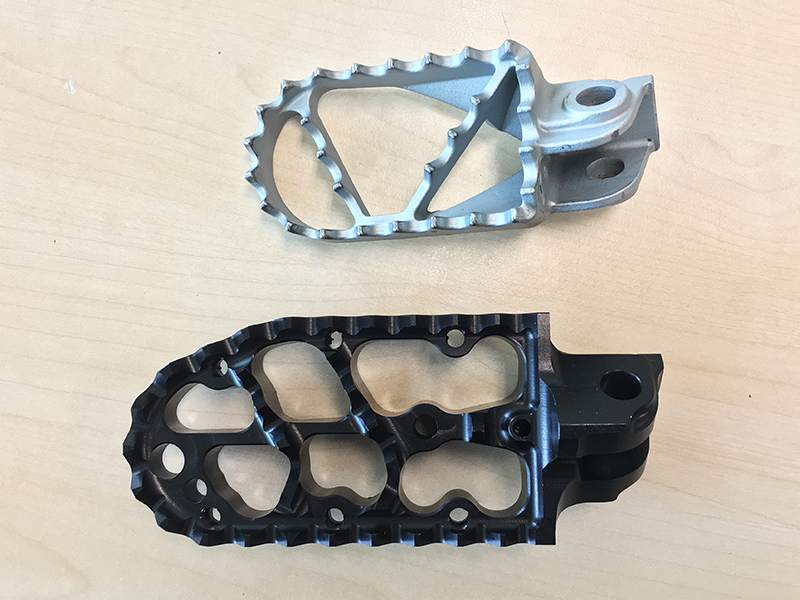
Two types of wide footpegs—pegs with a convex platform, and pegs that rotate slightly—can mitigate these problems by making it easier to rotate your feet. Convex pegs, which are generally less expensive than rotating pegs, give you good contact with the teeth in a variety of positions, but the convexity decreases the benefit of a wide peg because your foot contacts the top part of the curve rather than the entire surface (unless you have very soft-soled boots, which are undesirable for other reasons).
Read EarthRider 02: Stop Anticipating the Stop
Rotating pegs give you great contact at a variety of angles, which improves not just shifting, but also braking and accelerating, by giving you better control over your body position. One potential downside of rotating pegs is that, when you want to stand straight up and relax into your boots on easy terrain (rest stance), they may allow your heel to drop, which may be uncomfortable. Personally, I don’t see that as much of a downside; my calves can use the stretch. For some people, rotating pegs just “feel weird.” Riding a motorcycle felt weird to me for the first three months or so, but I eventually got used to it and my life has been enriched as a result. If the idea of rotating pegs appeals to you, I recommend allowing enough time for the weirdness to wear off—the benefits are worth it.
Clear the Area
Moving around and changing body position on the bike is part of effective off-road riding, and in some cases, of riding on pavement as well. All that movement can put you in contact with the bike in ways you might not expect. As your riding evolves, take time intermittently to check the areas where you may contact with the bike, making sure those points of contact are not dangerous.
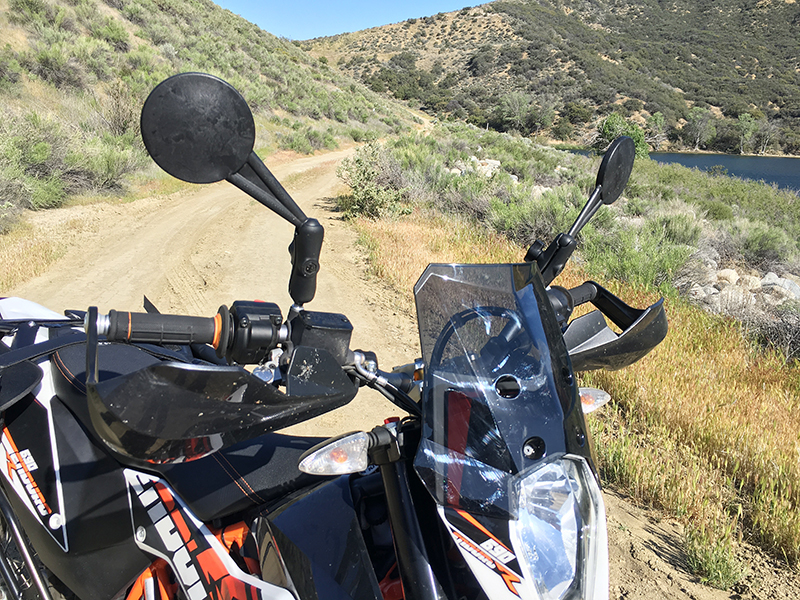
For example, a zipper pull loop on a glove can screw up your day if it catches on the stub of a mirror mount you left on the bars after switching to a different mirror style. Long/wide pant cuffs can catch on footpegs and shift/brake levers. Tall windscreens can be a safety concern during stand-up riding if an unexpected obstacle or situation causes your body to pitch forward. Tank bags can prevent handlebars from moving from lock to lock, and they often get in the way during stand-up riding. Centerstand actuation arms can impede foot movement. (My own centerstand horror story involves the arm sitting under my heel when standing. As I shifted position to make a counterbalancing turn, my heel came down, pushing the centerstand into the ground and preventing me from leaning the bike; not fun in a sharp turn with a ravine on the outside.) Depending on your boot size and/or riding style, you may be well-served by removing your centerstand or passenger footpeg brackets.
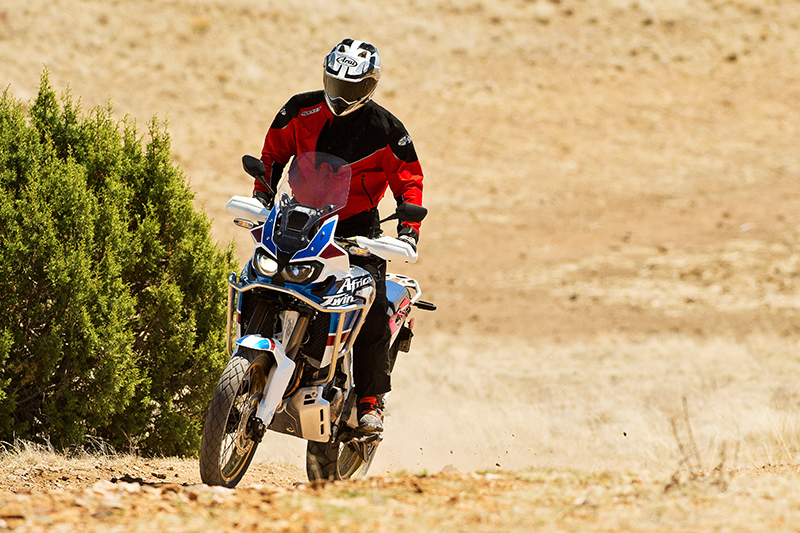
The bottom line is that you need to assess your motorcycle cockpit to make sure there are no parts of your bike that get in your way. And when you change parts, add farkles, get new riding gear or learn new techniques, assess it again.
Handlebars
If you are new to stand-up riding, do it for at least a month, experimenting with body position (which we will talk about in future columns) before shelling out hard-earned money for taller/shorter bars, risers or footpegs. Your body position is almost certain to evolve quickly, and you may end up regretting spending time and money making unnecessary equipment changes. That being said, handlebar design and position can make or break your off-pavement riding. I’ll tell you how in the next column. Until then, good riding!
For more information:
EarthRider’s SkillzDrillz schedule
EarthRider’s Facebook page
Email Laine MacTague at EarthRider.amgi@gmail.com







